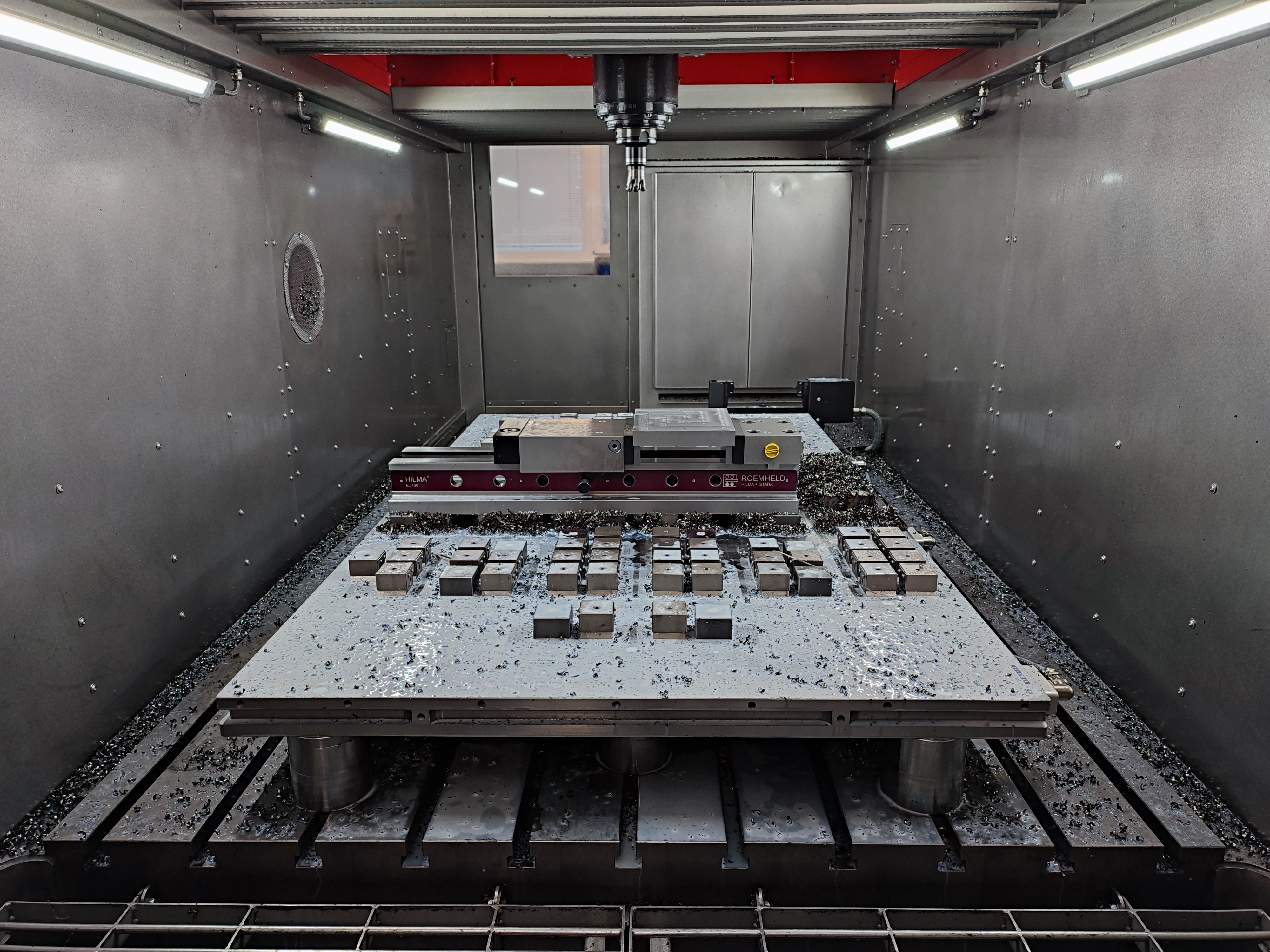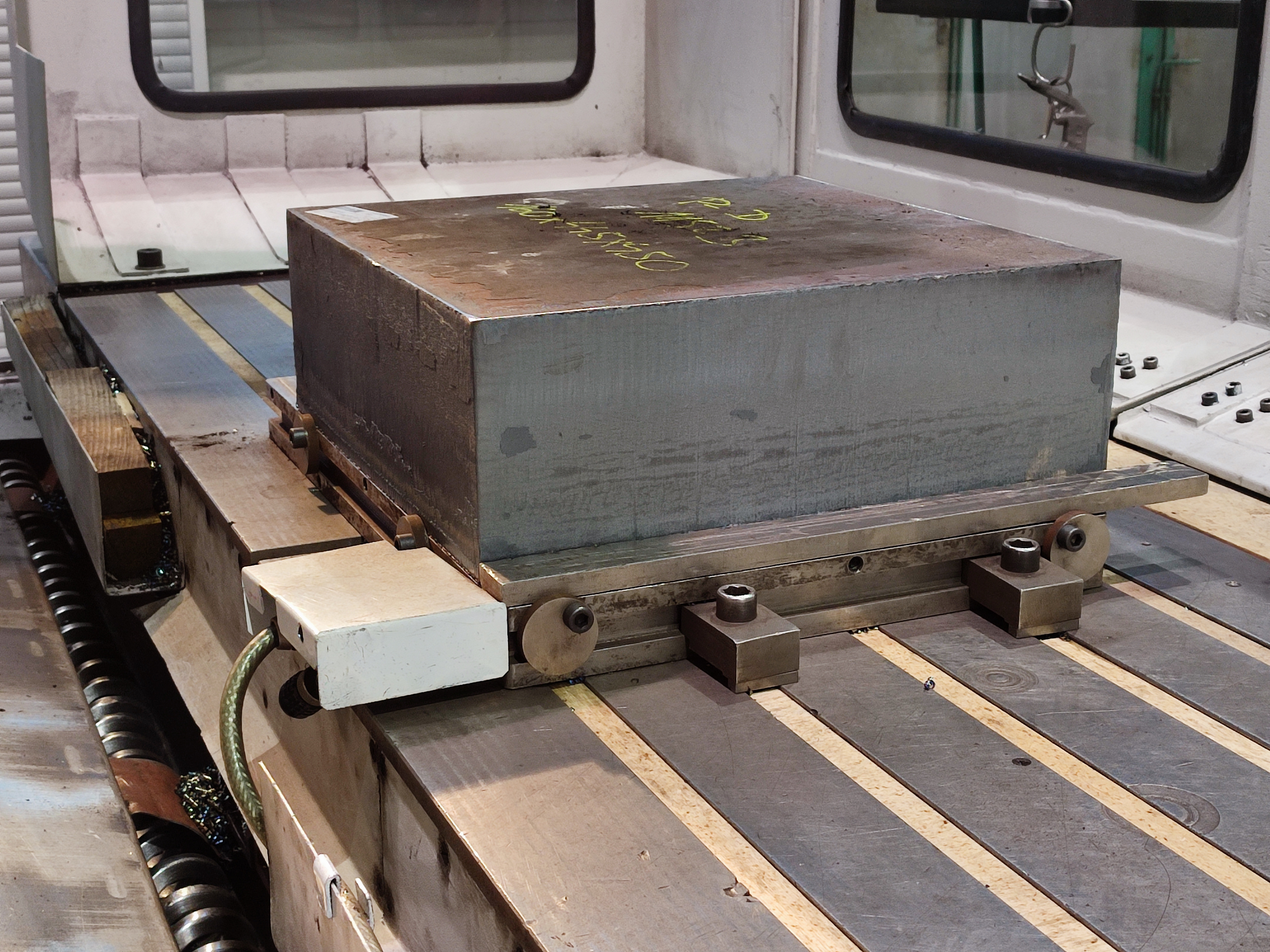Installation of lifting magnets or magnetic chucks in production or in a warehouse may seem like a huge intervention into the running of the production. The truth is, it’s not! Read this article to find out what the installation of magnetic tools looks like and that a magnet can be ready to be used in just a few hours.

Illustration photo of using magnetic chuck
Facilities that thrive with magnets
Lifting magnets and magnetic chucks are the most helpful in facilities that work with ferromagnetic materials (most often steel). Machining operations performed on steel semi-products, such as milling, drilling, or grinding, can be sped up by magnetic clamps and chucks, thus becoming more effective. Lifting magnets, on the other hand, can be a great help in docks or in metallurgy warehouses.
The first step when installing a magnet is always a thorough calculation of the necessary magnetic capacity, based on the customer’s needs and their production specifics. In Walmag, we take pride in providing our customers with individual solutions that are the most effective–not only when considering daily operations but also when it comes to the magnets’ installation. We consider all the important aspects already from the very beginning.
Installing magnetic chucks or lifting magnets doesn’t necessarily mean having to completely reorganise your production or warehouse, or suspend your daily operations for days. It all comes down to compiling a sensible solution—and that’s on us. The installation of magnets is the least demanding part of the process.
Yes, you will have to stop your lines for a while. But as we’ll explain further in this article, it won’t be for long, and it’s comparable to any basic maintenance.

Block of steel waiting to be machined, attached to the workstation
by a magnetic chuck. In the front, you can see the fixtures holding the chuck
in place.
Installing magnetic chucks
Installing a permanent magnetic chuck on a workstation doesn’t really differ from installing a manual clamp. An experienced technician will have it done in minutes as the entire process is very intuitive. You attach the chuck to the workstation with metal fixtures, and it's ready to be used.
Installing an electromagnetic or an electropermanent magnetic chuck to a workstation is just as simple, with one additional step: you need to connect the magnet to a power source.
Control units of some magnetic chucks can be integrated into the operation unit of the machining device (or any other device you might be using in your production). The line operator then operates the machining device and the magnetic chuck (its activation and deactivation) on one screen.
Connecting the magnetic chuck to a power source or its integration with the machining operation unit is described in its user manual, including a detailed electro connection scheme. A licensed electrician has to perform this task but it’s a routine one and only takes a few hours.
Installing lifting magnets
Of all the types of lifting magnets, permanent lifting magnets are the easiest to install. You attach them to a crane, and they’re ready to lift whatever you need it to.
Lifting electromagnets and electropermanent lifting magnets also need to be attached to a lifting device (most often a crane), and then there’s one more step to complete the installation—connecting the lifting magnet to a power source (except for battery-powered lifting magnets).
Lifting magnets with a lifting capacity of up to 10 tons never integrate with the lifting device’s operation unit, whereas high-capacity lifting magnets require such integration. Pay special attention to safety precautions when installing high-capacity lifting magnets—a strict safety protocol needs to be followed.
Magnets make your production more effective
Lifting magnets and magnetic chucks save time and money in your production. We calculated how much time and money you can save in our article on comparing manual and magnetic clamping in production. Read it if you want a more effective production.
We even lend magnetic chucks and lifting magnets in case you want to try them out prior to purchase. We know no production is the same, so we always assess the customer’s needs, specifics of their production or the possibility of the production becoming larger in the future.
Contact us if you want to know more about magnets in production—we’d be happy to share our expertise.